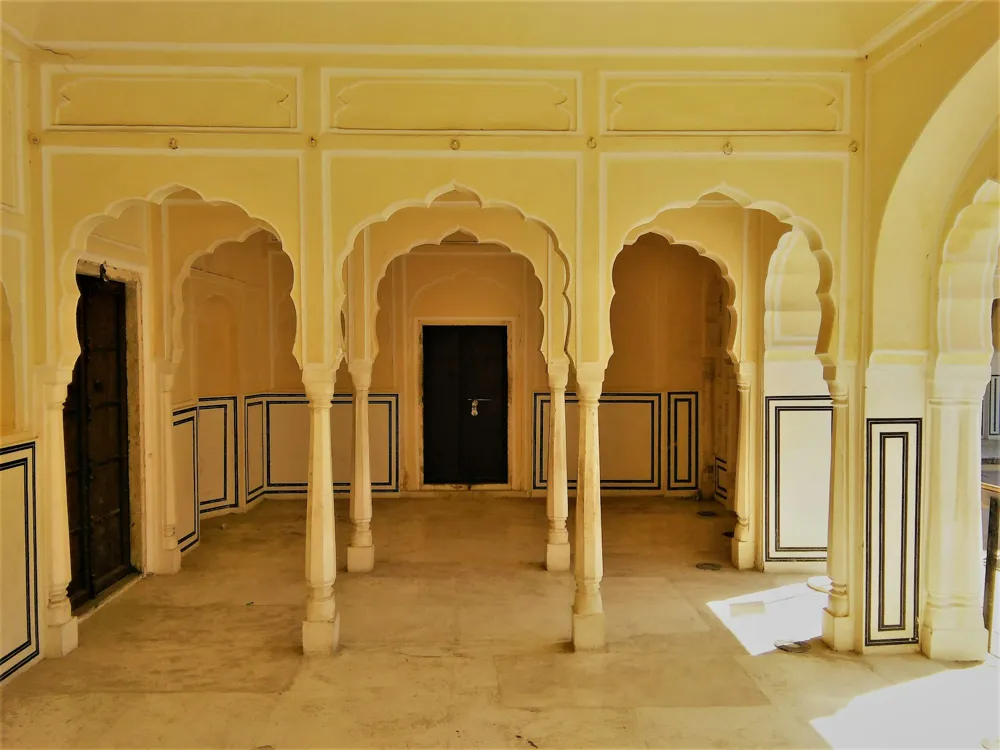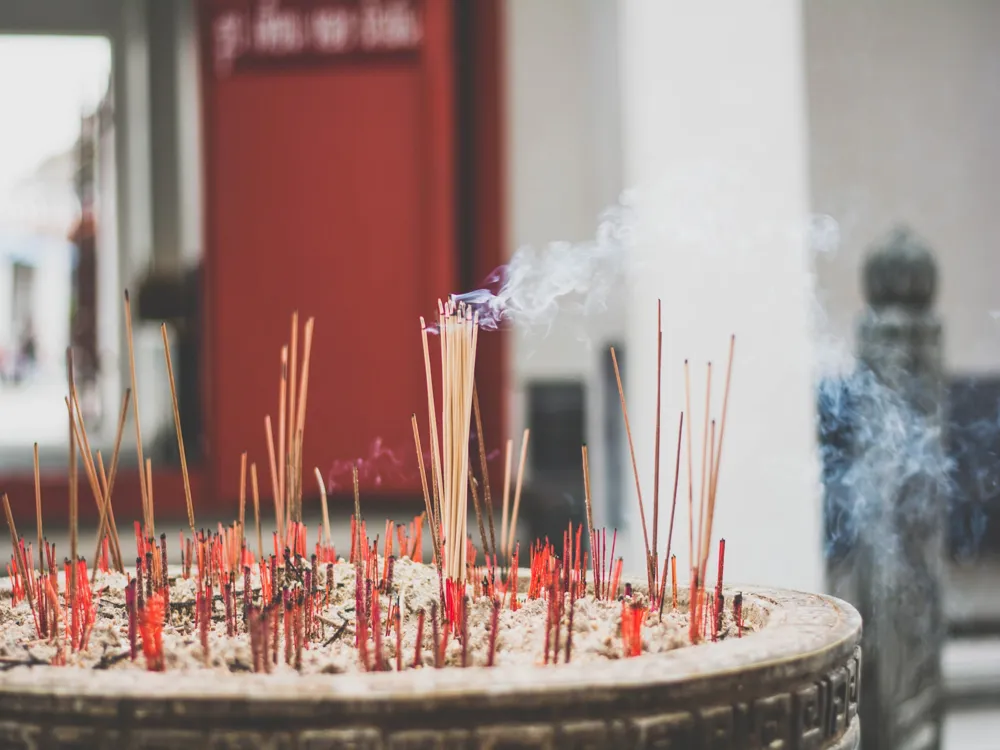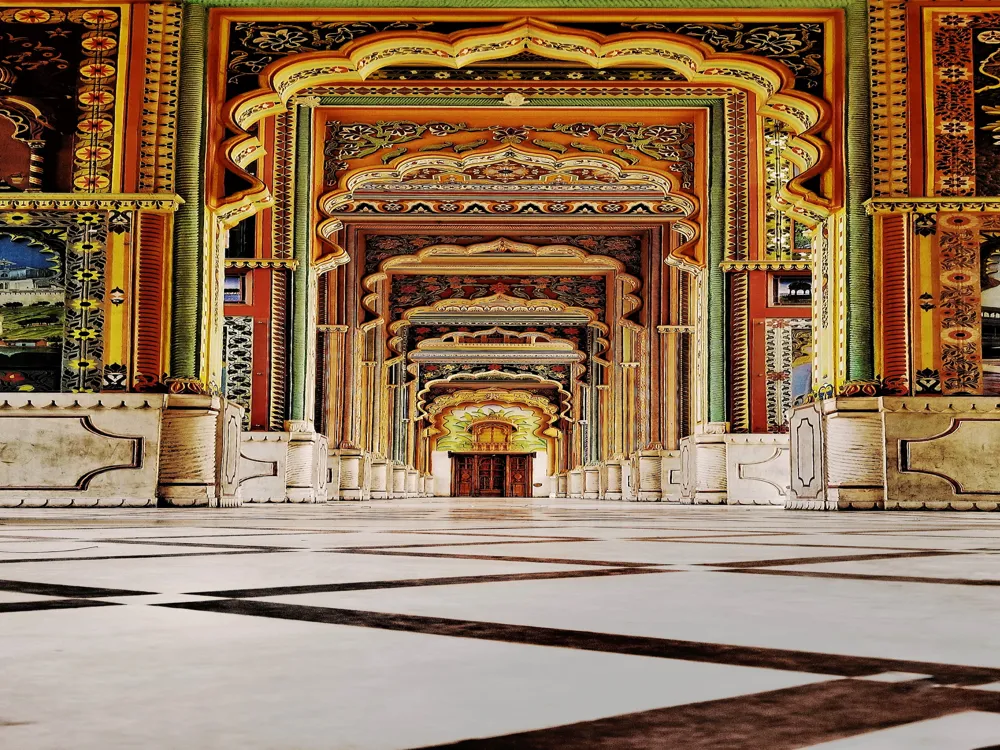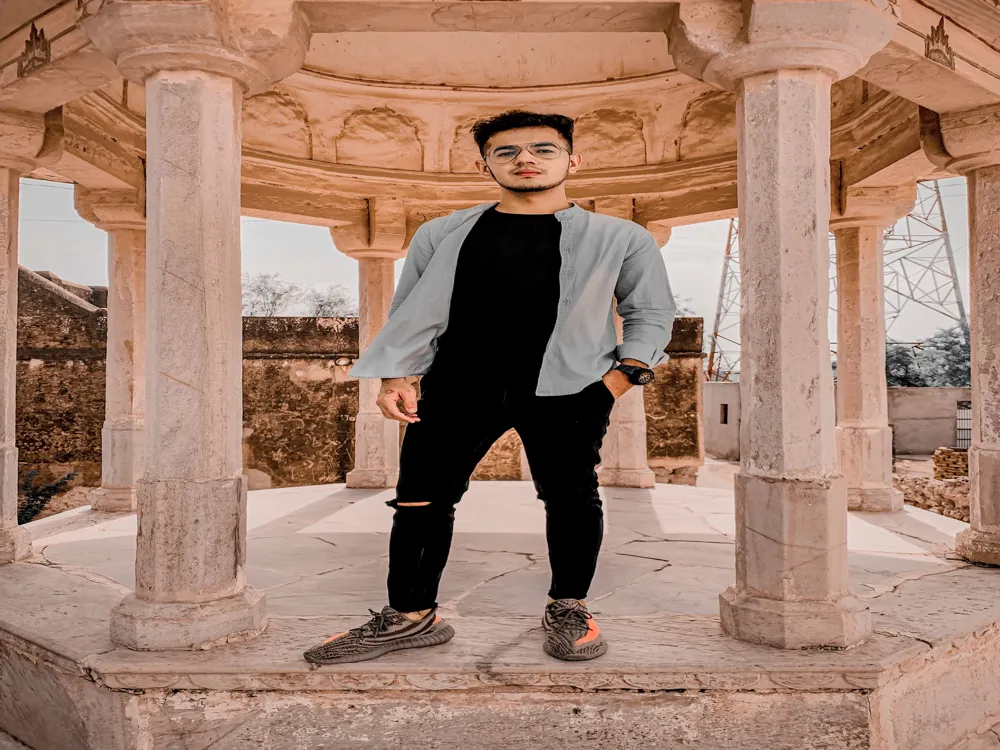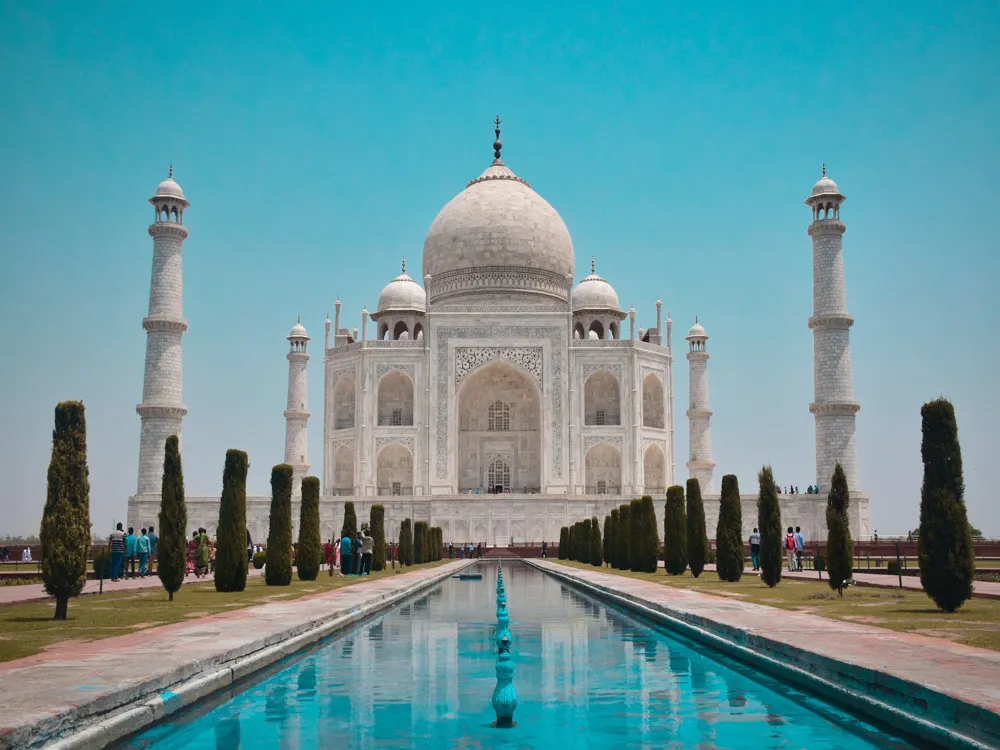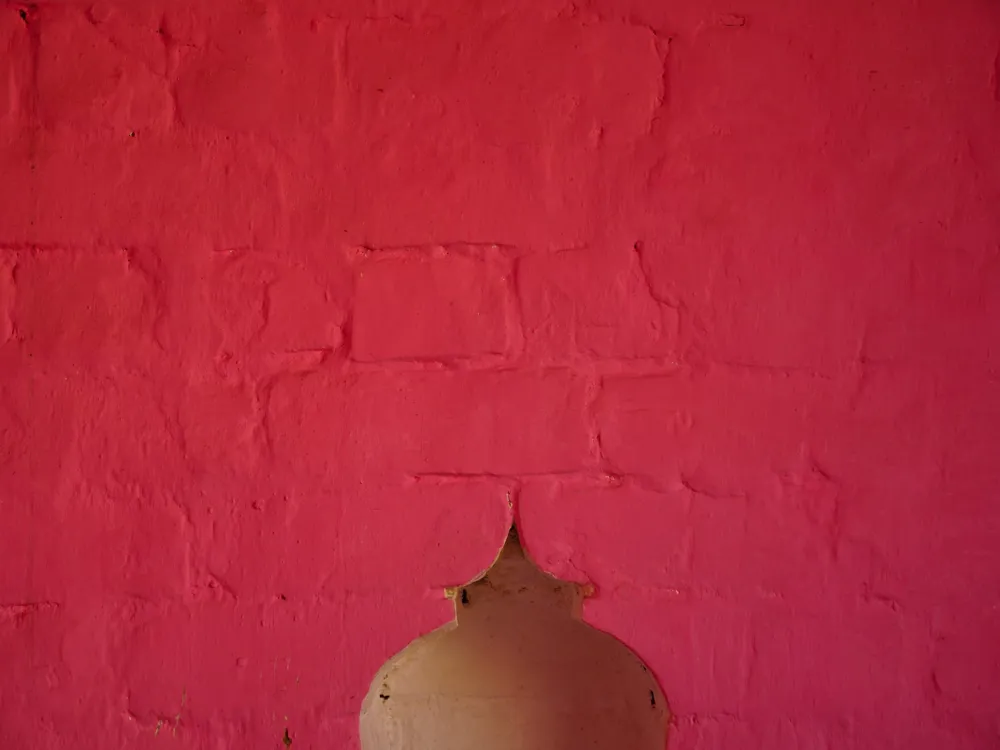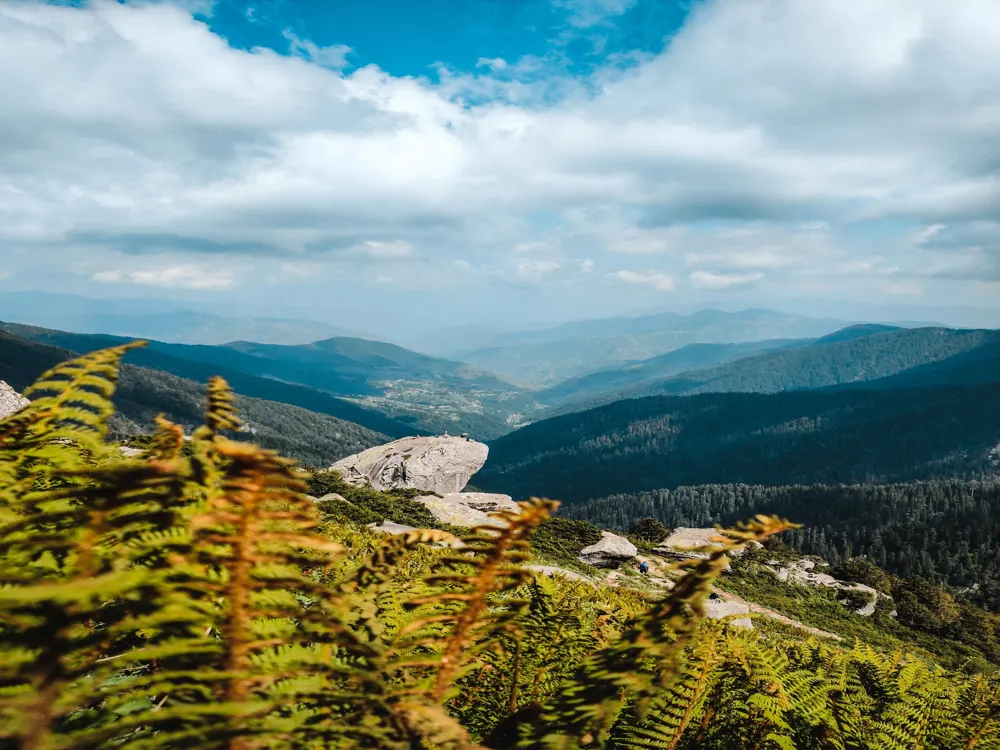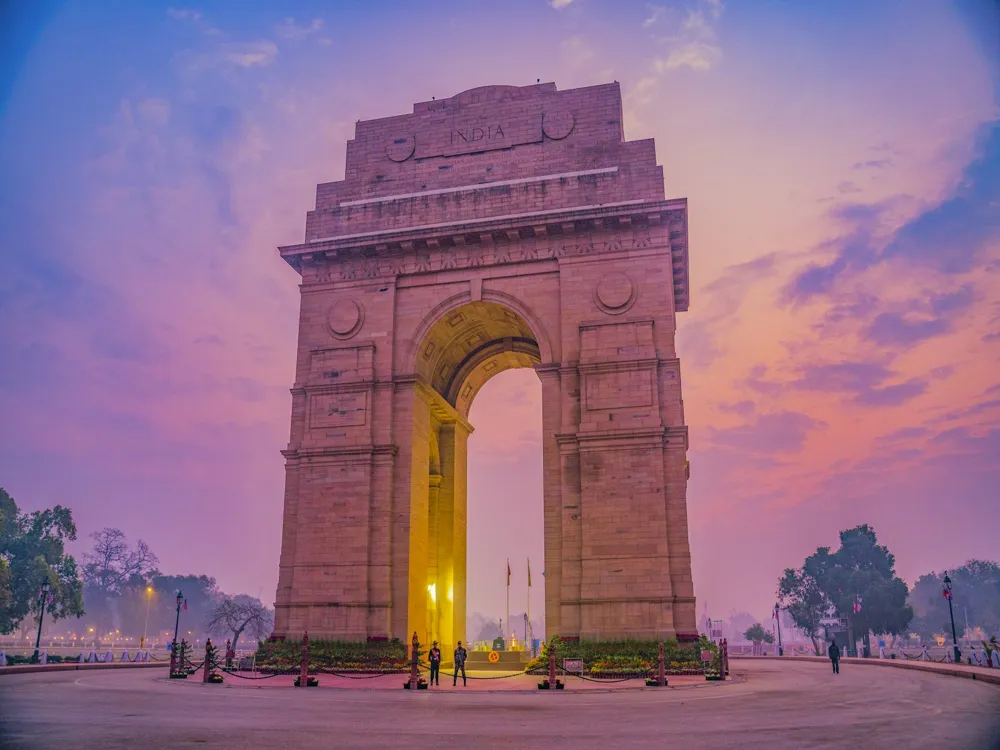Khetri Mahal, also known as the Wind Palace, is a hidden gem located in the heart of Jhunjhunu, Rajasthan. This exquisite palace, built in the 18th century by Bhopal Singh, stands as a testament to the architectural brilliance of the era. Unlike many other palaces in Rajasthan, Khetri Mahal is unique in its design and lacks the lavishness seen in its counterparts. The palace was constructed to enable the royal family to enjoy the monsoon winds, which is evident in its open structure and strategic placement of windows and vents. The beauty of Khetri Mahal lies in its simplicity and elegance. The palace is a two-storied structure made of white marble and sandstone. The main attraction of the palace is the intricate lattice work on its windows and balconies, which not only enhances its beauty but also allows for a natural cooling system. The palace's design is a blend of Rajput and Mughal architecture, evident in its domes, arches, and columns. The absence of elaborate decoration and the use of minimalistic design make Khetri Mahal a unique piece of architecture in Rajasthan. One of the most fascinating aspects of Khetri Mahal is its historical significance. The palace has witnessed several important events in the history of Rajasthan and has played a pivotal role in the cultural evolution of the region. The palace also offers a stunning view of the town of Jhunjhunu, making it a perfect spot for history buffs and architecture enthusiasts to delve into the past while enjoying the scenic beauty of the present. The architecture of Khetri Mahal is a fine example of the fusion of Indian and Persian styles. The structure is predominantly made of fine marble and locally sourced sandstone, which gives it a distinctive look. The Mahal's design focuses on functionality, aesthetics, and the climatic conditions of the region. The use of jaalis (lattice screens) in the windows and balconies is a key architectural feature. These jaalis not only add to the aesthetic appeal but also serve the practical purpose of cooling the interiors and providing privacy. The interior of the palace is equally remarkable. The main hall, or the Durbar Hall, is adorned with beautiful frescoes and intricate carvings. The ceilings are high, and the large windows ensure ample natural light, creating an airy and spacious atmosphere. The use of arches and domes in the construction reflects the influence of Mughal architecture, while the detailed stonework and carvings are characteristic of Rajputana designs. One of the most intriguing aspects of Khetri Mahal's architecture is its eco-friendly design. The palace's layout and construction materials were chosen to keep the interiors cool during the harsh summers. The thick walls and high ceilings help maintain a lower temperature inside, making it a perfect example of sustainable architecture in ancient India. The ideal time to visit Khetri Mahal is between October and March when the weather is pleasant, and the temperature is cooler. This period offers a comfortable climate for exploring the palace and its surroundings. Visitors are advised to dress modestly, keeping in mind the cultural sensibilities of the region. Comfortable footwear is recommended as there is a lot of walking involved. It is also important to respect the sanctity of the palace and avoid littering or causing any damage to the property. Khetri Mahal offers numerous photogenic spots. The best time for photography is early morning or late afternoon when the natural light is soft and warm, providing a perfect backdrop for stunning photos. Khetri Mahal is well-connected and accessible by various means of transportation. The nearest airport is Jaipur International Airport, from where you can hire a taxi or take a bus to Jhunjhunu. Jhunjhunu itself is well-linked with major cities in Rajasthan through a network of state and national highways. For those preferring train travel, the nearest railway station is Jhunjhunu railway station. From there, local transportation like auto-rickshaws and taxis are available to reach Khetri Mahal. Read MoreOverview of Khetri Mahal in Jhunjhunu, Rajasthan
Architecture of Khetri Mahal
Tips When Visiting Khetri Mahal
Best Time to Visit
Dress Code and Conduct
Photography Tips
How To Reach Khetri Mahal
Khetri Mahal
Jhunjhunu
Rajasthan
NaN onwards
View jhunjhunu Packages
Jhunjhunu Travel Packages
View All Packages For Jhunjhunu
Top Hotel Collections for Jhunjhunu

Private Pool

Luxury Hotels

5-Star Hotels

Pet Friendly
Top Hotels Near Jhunjhunu
Other Top Ranking Places In Jhunjhunu
View All Places To Visit In jhunjhunu
View jhunjhunu Packages
Jhunjhunu Travel Packages
View All Packages For Jhunjhunu
Top Hotel Collections for Jhunjhunu

Private Pool

Luxury Hotels

5-Star Hotels

Pet Friendly








